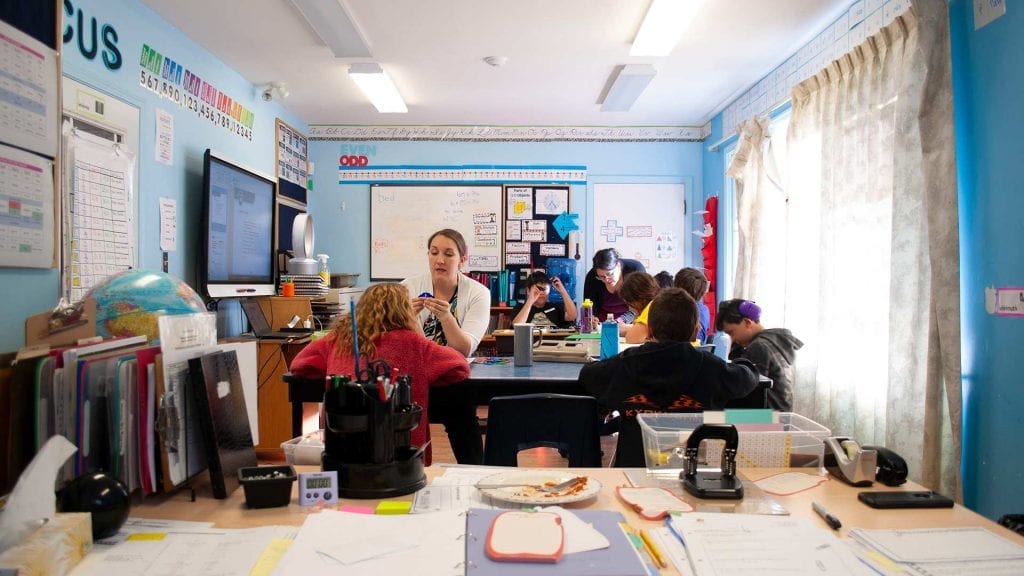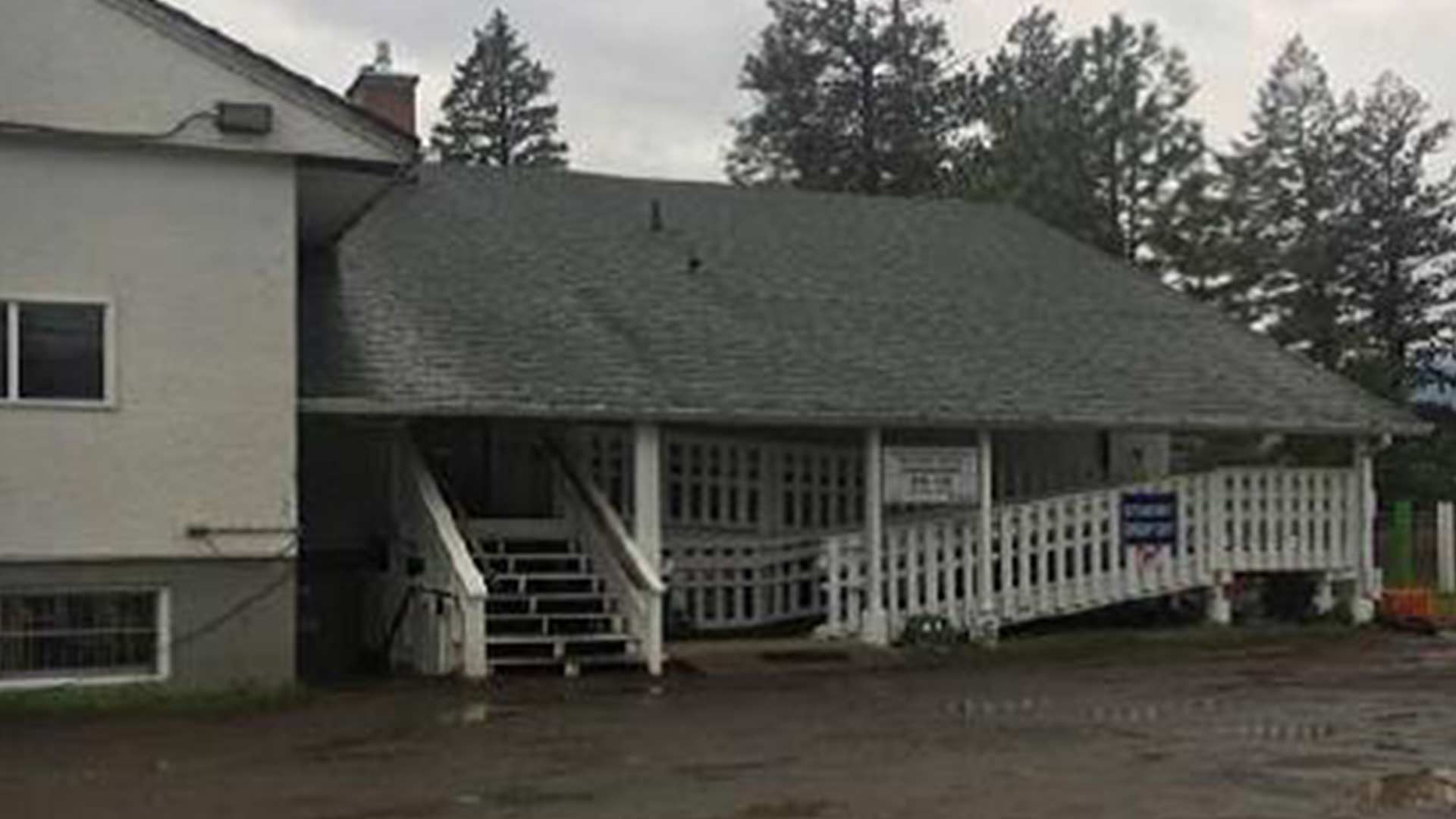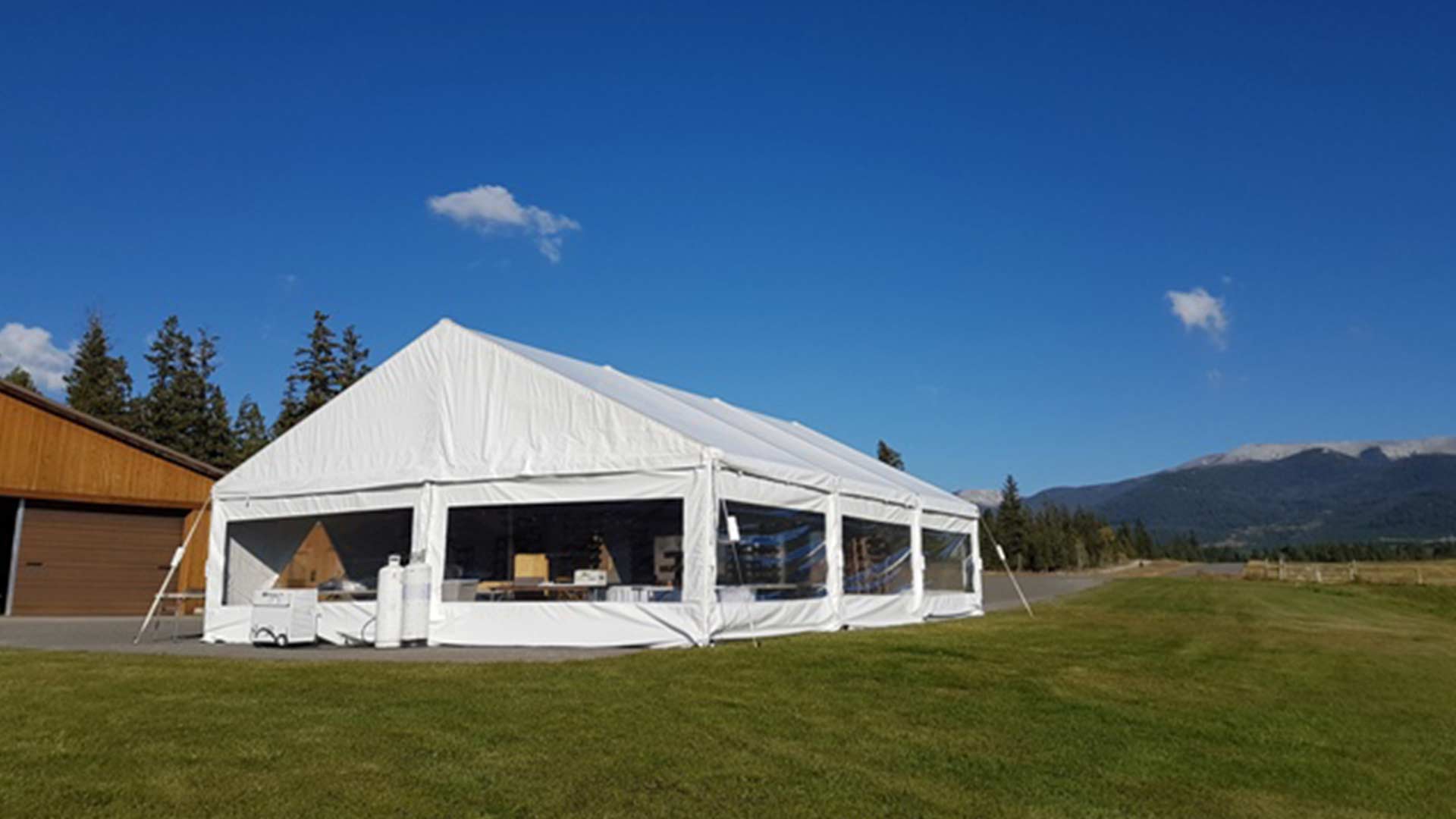
(Inside the Cultural Immersion School prior to COVID-19 shutdown. Gareth Jones photo)
On March 16, the Okanagan Indian Band (OKIB) closed all of its education services just as the COVID-19 pandemic began.
These departments included snc’c’amala?tn (Early Childhood Education Centre), ckwu kw ƛ̓ lap il skwkwƛ̓ ilt naɬ ƛ̓ x̌ əx̌ ƛ̓ x̌ ap (Language Nest), and nk̓ maplqs iʔ snm̓ am̓ ay̓ aʔtn iʔ k̓ l sqilxwtət (Cultural Immersion School).
With many B.C. schools set to reopen this fall, some teachers and instructors have been preparing new teaching methods while following public health safety measures.
The OKIB Education Services Department has been working since the closure to implement a plan to return to in-class sessions in the fall, using both virtual and nature-based classes.
“With COVID-19, there’s a lot of challenges that come into place with having a return to school program, a safe return to school program for both students and teachers, and staff,” says Gareth Jones, director of OKIB education, language and culture, located near Vernon, B.C.
The elementary school, nk̓ maplqs iʔ snm̓ am̓ ay̓ aʔtn iʔ k̓ l sqilxwtət (Cultural Immersion School), is the only department reopening on Sept. 14, however. It includes students in kindergarten to Grade 7.
The nk̓ maplqs iʔ snm̓ am̓ ay̓ aʔtn iʔ k̓ l sqilxwtət (Cultural Immersion School) was developed in 2006. Jones explains that the intentions of the elementary school are to teach kindergarten to Grade 7 students the Syilx culture and language through a mix of contemporary and traditional teaching styles.

“We have two teachers that are very well experienced in the Syilx language, and one that’s very good at the cultural part. And we’ve always had that in our school, everyday students learn the language so they are quite fluent by the time they’re in Grade 7.”
When COVID-19 led to school closures in March, the OKIB Education Services Department had teachers and language instructors move all their classroom instructions online, using Facebook pages to regularly update students and parents in order to complete the previous school year. However, language teachers wanted to steer away from virtual classes this semester, because they feel it is more effective to teach the Syilx culture in hands-on activities while using the language as much as possible, says Jones.
“Speaking with my teachers, they did find it very difficult, challenging to do online teaching. They can’t see themselves doing both at the same time, and it’s almost like needing to [do] two jobs.”
So the staff got innovative, with the Cultural Immersion School partially moving to outdoor learning – as much as the weather will allow. This will offer a more traditional setting for Indigenous learning.
“We have restrictive things we have to put in place for them, their safety, as well as the staff’s safety inside the school, because our rooms are too small to work effectively,” says Jones.
The OKIB Education Services Department has purchased two large tents for outdoor class instructions, so when classes have to be brought together in assemblies or cultural activities, this will provide space and easy outdoor access.
“Being in the outdoor space will allow the children to remove their face masks and [work] away from behind a plexiglass desk,” says Jones. “I’m having contractors build proper floors for them. So, like, a wooden deck floor underneath, and we’re going to have a fenced wall around it.”

Outdoor classrooms will be used as much as possible, including the gazebo behind the New Horizons building nearby, along with the qwi’ci (pithouse) at Komasket Park, which will be converted into an outdoor learning space.
“We have qwi’ci, the winter home of Okanagan people, a large one, it has all of the electrical plug-ins,” says Jones. “So you can actually do teaching out there, you can have your laptop.”
The school will be installing heaters and additional lighting in the qwi’ci, so teachers will be able to use it on a regular basis and students will be spread out.
“I really feel it’s a powerful place for learning, and learning about the culture and the language as well.”
Teachers will be back to work on Sept. 8. Students will return the following week, when outdoor learning will begin to be implemented.
The first two weeks will be spent teaching students about all of these new protocols, including the importance of hand-washing, wearing a face mask, and social distancing. Jones says he is anticipating that, by the end of September, classes will be completely set up and ready for full sessions.
“I think for kids who have some learning challenges and things, it’s actually a better place for them, because they can connect with the things that are happening in nature and things around them, right on the spot.”
How indoor learning will continue
After the closure, the OKIB Education Services Department spent time developing ways they could integrate technology into their curriculum going forward in case of a second wave of COVID-19, and in instances of bad weather that might not be conducive to outdoor learning. This included purchasing laptops and tablets for all students.
“Each child is issued one tablet at the beginning of the school year,” says Jones.
He wants students to stay connected, safely socializing with their peers, while giving parents the ability to return to work and, most importantly, to keep learning the language.
“I’m trying to make a positive out of a negative, I believe that’s the exciting part of this.”
Prior to COVID-19, children would work in a small classroom with a shared table. But with social-distancing measures in place, even seating styles will change.
“So some of our plans are…to try and keep our grades separated,” says Jones.
Grade 1 students will be in a portable classroom for the school year. Grade 2 and 3 students will take over the lower part of the school – the basement area – that will offer a larger working space. Grade 4 and 5 students, meanwhile, will take over the space formerly held by Grade 6 and 7 students, who will be moved to the local New Horizons building, which will be rented out from the Elders.
In addition, Jones says two new long-term portable classrooms will be ordered to provide additional classroom space for all.
The teacher will record all instructions for all students who have any symptoms of COVID-19 and have to self-isolate, which will be a requirement for those returning. Parents will also be required to have their children sign in online every day during classroom hours to follow along the live broadcast with their peers.

The OKIB Education Services Department received COVID-19 emergency benefits at the end of last school year, Jones says.
Through the funding, he purchased safety equipment for indoor classes. This includes an HVAC air purification system for each classroom, installed to clean the air periodically.
And whenever possible, all classroom windows will remain open during the school day to maintain airflow.
“I’m trying to embrace this as an opportunity, this whole COVID-19, as a chance to change and to rethink learning, and go back to practicing what our school was founded on.”











